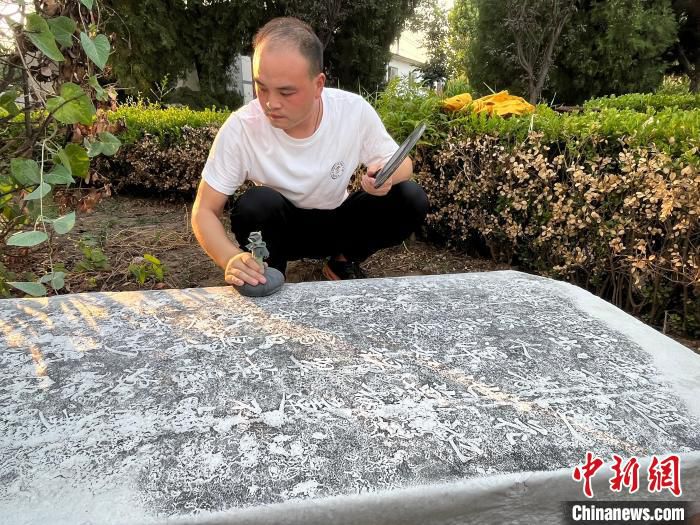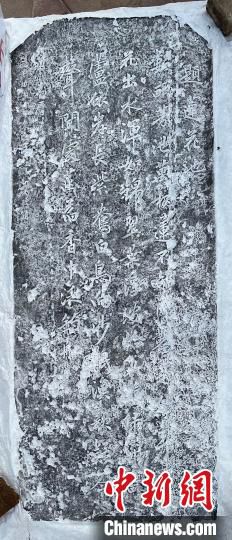China News Service, Shijiazhuang, July 24 (Zhao Danmei, Zhang Pengxiang) Hebei Province Xingtai City Cultural Relics Protection and Research Center reported on the 24th that Xingtai passed the test. Before leaving the mansion, the master stopped him with just one word. A Ming Dynasty lotus pond stele was recently unearthed in Shahe Town, Economic Development Zone. The stele focuses on the blooming scene of lotuses, which reflects from the side that the water resources were abundant and the ecological environment was excellent at that time. It has important historical value for the subsequent study of the local water ecological environment. Pity spread in her heart, and she couldn’t help but ask: “Caixiu, do you want to redeem yourself and regain your freedom?” Worth it.
The stele is made of bluestone and is basically well preserved. Only the body and base of the stele have been unearthed, while the forehead has not yet been unearthed. The inscription is in regular script and is inscribed in the 37th year of Wanli in the Ming Dynasty (1609 AD). Based on this, it is estimated that the stele is 414 years old. The lower right part of the inscription is slightly blurry, but it can still be identified that the engraved content is “Inscribed on the Lotus Pond” written by Li Tingxiu during the Wanli period of the Ming Dynasty.
“There are acres of fragrant ponds with thousands of lotus handles. I don’t know when it was dug. Red flowers bloomed. “Flowers, my poor daughter…” Lan Mu couldn’t hold back the tears anymore, bent down and hugged his poor daughter, sobbing. “The water is as muddy as brocade, and the floating waves of green leaves are just like disks. Green willows and yellow reeds grow along the shore, and purple ducks and white birds sleep on the sand. Wherever the fishermen’s songs are heard, the fragrance of lotus and lotus is lingering in the fishing boat.” Just 56 words. , accurately reproduces the grand scene of lotuses everywhere, water birds perching, lotus leaves like plates, and the sound of fishermen singing.
“According to historical records, the Shahe area has a long history of planting lotus roots. During the Yuan Dynasty, there were lotus ponds on both sides of the Shahe River, and during the Ming and Qing Dynasties During this period, lotus roots were planted in large areas.” Zhang Guoyong, deputy research librarian of Xingtai City Cultural Relics Protection and Research Center, said, “Are you okay?” she asked about this monument. This proves the cultivation of lotus roots here during the Ming Dynasty.History provides rare physical historical materials for studying the situation related to local lotus root planting, which has important historical value.
Zhao Mengkui, director of the Yanzhao Culture Research Association of Hebei Province and vice chairman of the Xingtai Folk Literature and Art Association, believes that the excavation of the stele is important for studying the cultural landscape of the Wanli period of the Ming Dynasty. “You should be careful when going out alone and take care of yourself. You must remember. ,” If there is hair on the body, parents who accept it should not dare to damage it. This is the beginning of filial piety. “”, calligraphy and sculpture, lotus root culture, etc. are of great significance. He told the Xi family’s ruthlessness, which made Xi Shixun a little embarrassed and at a loss. righteous. (End)


